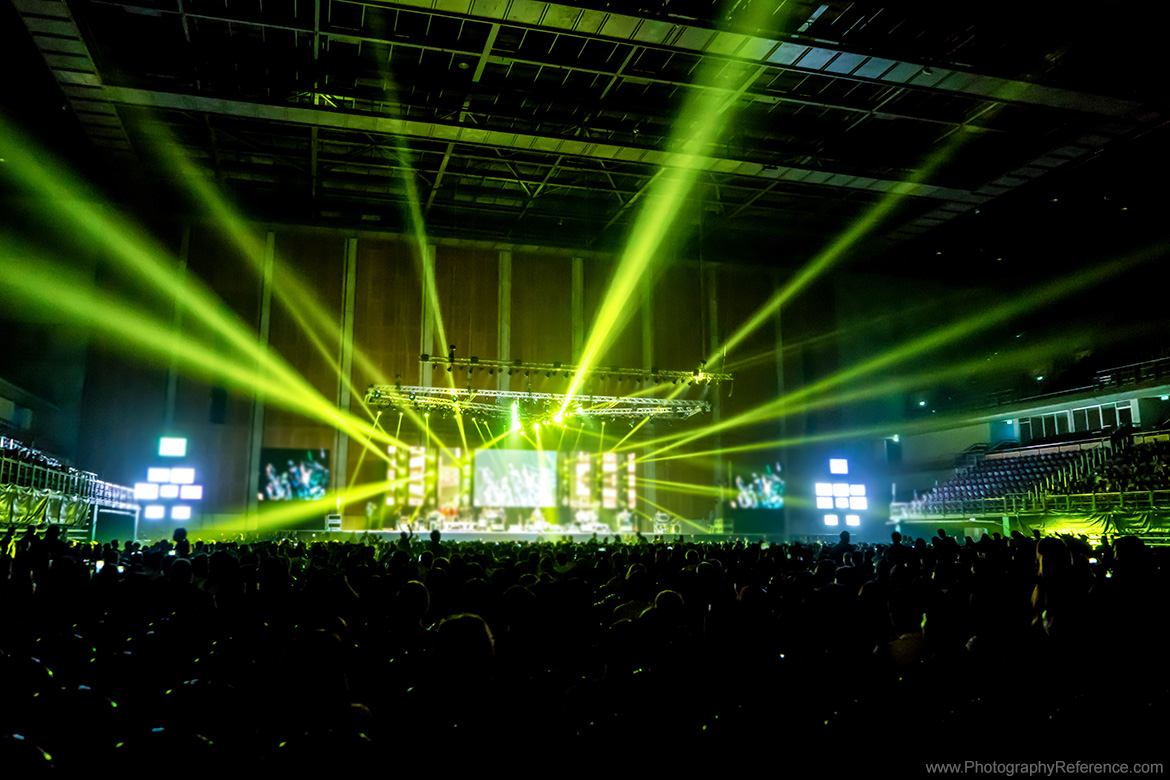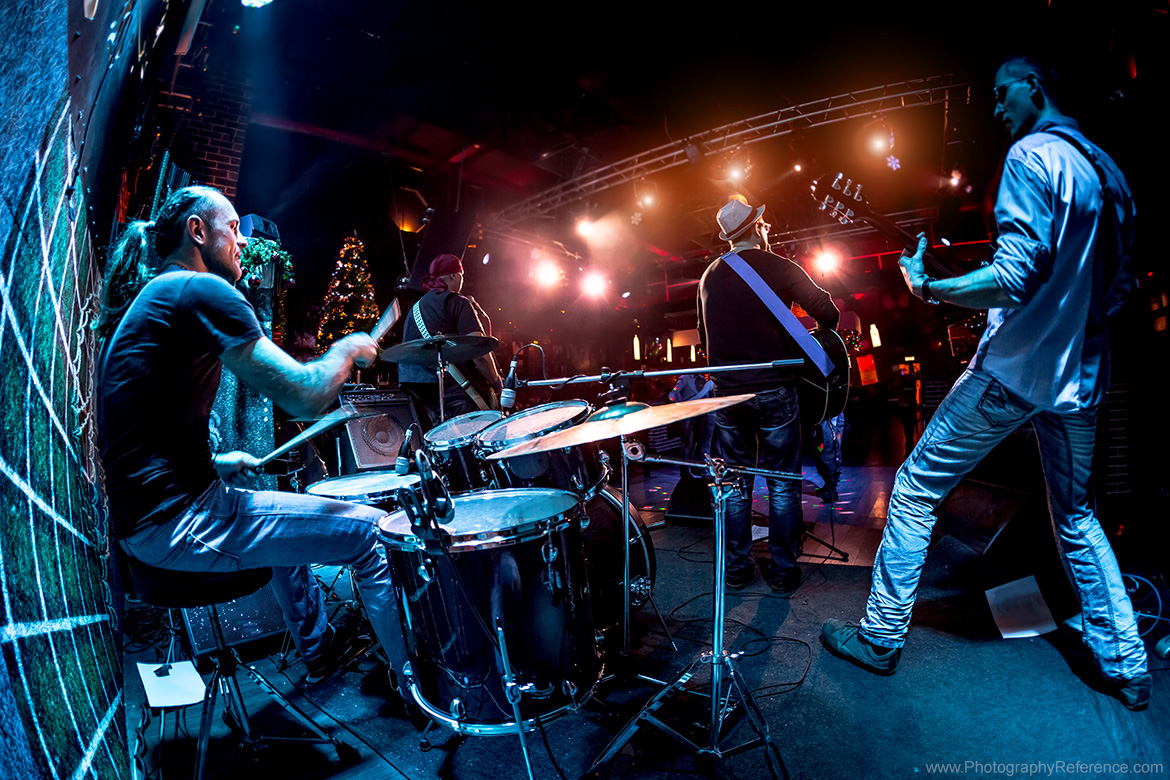Concert photography a commercial genre of photography where photographs are taken of a musician, band, or concert. All musicians at some stage throughout their career may require photography of their concert to promote their music. Concert photographers are usually hired to capture photographs of the musicians in action.
Concert photography can sometimes have more to do with being in the same arena and having the privilege of photographing well-known artists than it has to do with a descent and reliable payment for services. Artists (including photographers) can be highly protective of their product whether it be music, their portrait image, or their brand. As such there may be very strict rules as to what a photographer can do with the photographs taken at a concert.
TO LOVE MUSIC IS TO LOVE CONCERT PHOTOGRAPHY
We earn commissions if you shop through the links below. Additionally, as an Amazon Associate I earn from qualifying purchases. Please read the full Affiliate Disclosure.
Consider end use contracts
A band just starting out may not require a usage contact with the photographer as they may be more interested in the publicity of their music, however more well-known bands may restrict photographers from any use of photos captured at a concert through contracts. Depending on the musicians’ and the photographers’ usage rights it may come to pass that all rights for photos are retained by the musician in return for payment to the photographer. Other rights may include semi-restricted to unrestricted usage by the photographer in return for no payment to the concert photographer.
Depending on the musicians’ and the photographer usage rights it may come to pass that all rights for photos are retained by the musician in return for payment to the photographer.Photography Reference
How to start concert photography
A great way to start out in concert photography is to simply contact local bands and ask if they would like one or more of their concerts photographed. You could come to a payment and usage rights agreement, or you could shoot for free in return for more unrestricted usage rights of the photos.
However, be prepared for the musician to attempt to dictate the terms of the use of their image. After all its their image that is almost as important as their music and any imagery produced that puts the musician in a bad light may affect their future success. after all, concert photography is a commercial photography enterprise.
Musicians thrive on the beauty of their art and will want to include the unfettered ability and image licencing to be able to upload images to their website, TikTok, Facebook and Instagram accounts.
Concerts are typically dark, have fast-changing coloured lighting and the artist may be moving quickly at times across the stage. This can play havoc for a concert photographer as the photographer will need a fast shutter speed at times to capture the moment without blur.
Who knows, you may end up photographing musicians in Carnegie Hall or the Grand Ole Opry!
A fast zoom lens on a DSLR or mirrorless camera with very good low light capabilities is recommended. Although you can shoot perfectly fine with a fast prime lens such as a 50mm f/1.8 you will find that you may need to shoot wider or deeper at times to capture all the elements of the concert that the musician is expecting from you.
Concert photography camera settings
Shooting at the fastest aperture of f/1.8 or f/2.8 may not be sufficient for some photographs. The last thing you want is to have 100 shots where the musician’s microphone or instrument is in focus but not their face! So, you may need to lift the aperture to f/8 or higher. To maintain a descent fast shutter speed, you may need to bring ISO up very high, to ISO6400 or higher depending on the lighting conditions.
A camera system that can handle high ISO in dark conditions would be immensely helpful for you in creating crisp photography of which both you and the musician will be proud of. Get to know your lens and the depth of field for various apertures at differing focal lengths.
Spot metering
Spot metering is also a great suggestion to ensure the artist is generally exposed correctly. Evaluative metering may easily result in an underexposed artist due to the harsh and blinding spotlights of the stage overpowering the light meter of the camera and causing a bias towards underexposure of all other elements of the photograph.
A quick calculation when using a 70-200mm lens at f/8: If you’re say 20ft from the musician, at 70mm the depth of field is approximately from 15.4ft to 28.4ft for a total 12.9ft. This may suffice but depends on the depth of the band and your location in relation to the band. At the same distance, but at 200mm zoom the depth of field is reduced to 19.3ft to 20.7ft, for a total depth of field of just 1.42ft. So, if your focus is on the instrument and not the artist’s face you just may blur the artist’s face at f/8, 200mm at a distance of 20ft.
Practice, practice, practice
Practice and then practice and test your depth of field again and again. Or scout the venue before the concert if you can for locations within the venue from where you’ll be shooting and you’ll be able to run some tests and be comfortable with your camera setting when the heat is on during the live concert.
Flash is of limited use in concert photography
The introduction of flash can overcome shutter speed and ISO limitations for most photo shoots; however, this is not recommended for concert photography. The concert photographer needs to be respectful of the artist and of the audience as flash could interrupt the performance and disrupt the audience.
Even where the use of flash has been okayed by the artist and the venue – when the audience sees flash constantly firing, they may have no idea that it is a paid concert photographer, and they could begin taking their own photographs which is usually against their ticketing contract. The result could be a complete disruption to the concert and a very annoyed artist. So, tread carefully with any thought of using flash as a paid concert photographer.
Location and angles
The shooting location of the concert photographer will be all angles! This means the concert photographer should not have one single fixed point to shoot from. The photographer should move left, centre and right of stage to show the musicians in action from various angles. It is also highly recommended to get shots from behind the musicians showing the audience in relation to the artists. These shots can show the beauty and size of the venue and the cheerful interaction of the audience with the artist and the music.

Have fun with concert photography!
If you love music and photography you will enjoy concert photography.
